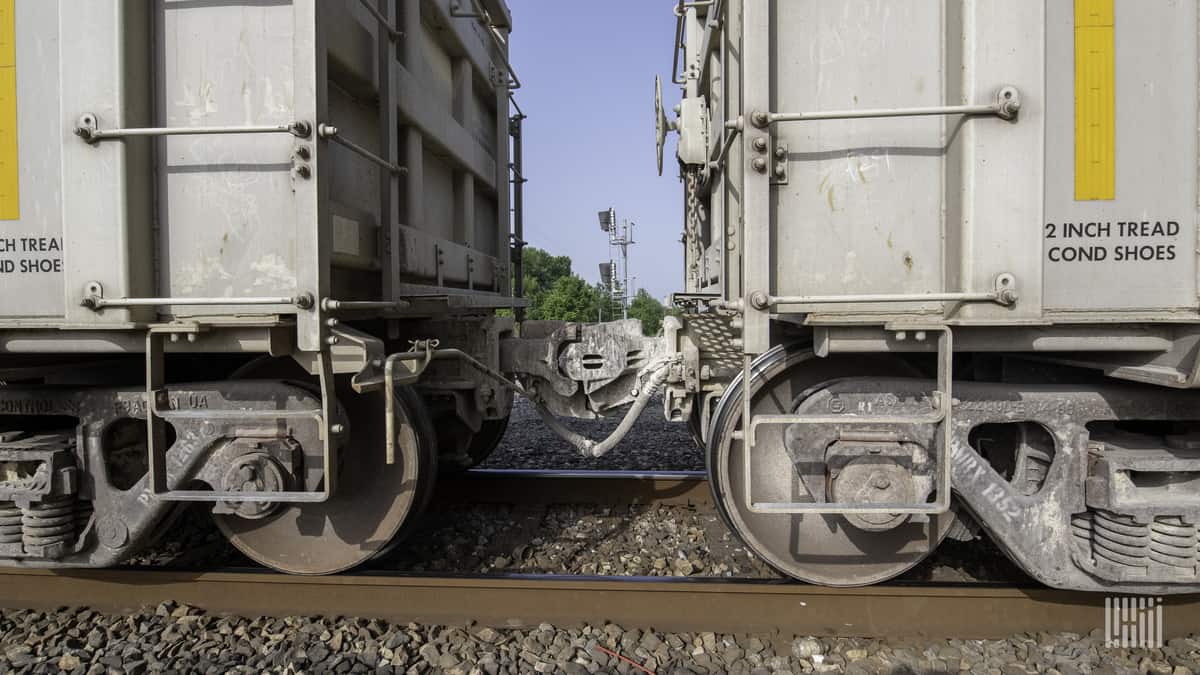The Federal Railroad Administration (FRA) has announced more than $6.9 million in funding for freight rail projects in Alaska and South Dakota.
Monday’s announcement by FRA follows a tweet by President Donald Trump, who said separately on Saturday that he would be issuing a presidential permit granting the construction of a freight railroad between Alaska and the Canadian province of Alberta (see below).
More than $1.2 million will go to two projects in rural Alaska as part of the special transportation circumstances grants related to the Consolidated Appropriation Acts of 2019 and 2020. These grants are for rail projects that aren’t connected to the national passenger and freight rail system.
The Alaska Department of Transportation and Public Facilities will receive up to $761,918 for an Alaska Railroad wheel impact load detector in Anderson. The project seeks to install and put into service a wheel impact load detector on the northern portion of the Alaska Railroad rail system near Anderson. The detector will help assess for possible damages that could affect vehicles, cago and rail infrastructure.
The department will also receive up to $480,082 to upgrade an existing intermediate control signal to a complete control point at milepost 158.9 of the Alaska Railroad in Wasilla. Having a control point at this location will allow the Alaska Railroad dispatch more operational options to keep passenger and freight trains moving while allowing maintenance-of-way work to continue with fewer disruptions since potential stoppages will impact a shorter section of track, FRA said.
The Alaska Railroad provides passenger and freight rail service. Commodities shipped include energy products including petroleum and coal, aggregates, and cement and scrap metal. The railroad also offers barge and interline services from Whittier, Alaska and Prince Rupert in British Columbia.
Meanwhile, the South Dakota Department of Transportation has received more than $5.6 million for three projects.
It has been awarded nearly $1.9 million for several track improvements on the Dakota, Missouri Valley & Western Railroad. The improvements, located on state-owned track between mileposts 115.5 and 74.6, entail replacing approximately 20,450 ties, removing and replacing old anchors, adding ballas, and making repairs to two railroad bridges.
The state also received $2.2 million for the Midland Rail improvement project, which entails the replacement of approximately four miles of main line on the Rapid City Pierre & Eastern Railroad between Fort Pierre and Rapid City and through Midland. Replacing the nearly 100-year-old track will ultimately reduce derailment risks. The railroad itself is a part of Genesee & Wyoming.
A third award of $1.56 million will go toward constructing a new, approximately 10,000-foot rail siding east of Highway 45 near the Gavilon grain elevator on the Dakota Southern Railway mainline east of Kimball, South Dakota. The siding increases capacity and decreases delays, FRA said. The railway is part of the Midwest Pacific Rail Net & Logistics.
Trump tweets support of Alaska railroad project
FRA’s announcement comes on the heels of a Trump tweet, in which the president said he would be issuing a permit for the Alaska to Alberta (A2A) freight rail project. Trump said he supported the project on behalf of Alaska Sen. Dan Sullivan and Rep. Don Young.
Young responded Tuesday, “Very frankly, A2A means jobs and opportunity, which are sorely needed amid this ongoing pandemic. This endeavor will strengthen our country’s already close relationship with Canada and allow us to work hand-in-hand to responsibly develop our resources.”
He continued, “The Presidential Permit means this project, and the economic potential it brings, can move forward, and I am very pleased that President Trump officially signed it today. I will continue to support the project to its completion, and will be doing everything within my power to cut through red tape and bureaucracy.”
An analys is of the project’s financial prospects by FreightWaves contributor Jim Blaze is here.
According to A2A’s website, the project would have a number of hurdles to clear before construction could begin. With the presidential permit in hand, the company can now work with the Surface Transportation Board to begin a review there. The project also needs to be reviewed under the National Environmental Policy Act, and the company needs permits and licenses for interstate railroad commerce. Land acquisition must also occur in conjunction with the Alaska Railroad, the Alaska Department of Natural Resources and private landowners.
In Canada, A2A would need to undergo an environmental impact assessment (EIA) coordinated between the federal government and the provinces of the Yukon, British Columbia and Alberta. The process would also include outreach to the indigenous peoples and First Nations members along the proposed railway route. After the EIA, the project would need additional authorization from other federal, provincial and territorial offices.
The project is estimated to cost more than C$22 billion or US$17 billion. Construction would begin near Fairbanks and move toward Canada. Roughly 200 miles would be in Alaska and an additional 1,400 miles would be in western and northern Canada.
Click here for more FreightWaves articles by Joanna Marsh.
Related articles:
Commentary: Financial risk assessment for Alaska-to-Alberta rail freight awaits
Commentary: Is the Alaska Railroad on track to the ‘Lower 48?’
Commentary: Positive Train Control costs Alaska Railroad … does it add value?
More states and groups voice opinions about Washington state’s crude-by-rail law










